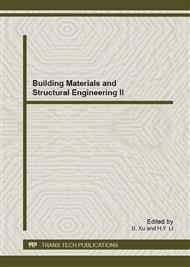p.39
p.45
p.50
p.54
p.58
p.63
p.67
p.73
p.78
Glass-Fibre-Concrete Applied for Building Façade Panels Subjected to Wind Loading Actions
Abstract:
In the period of several years, the research oriented to the development of particular type of glass-fibre-concrete (GFC) and to its application in buildings is continuously realized on the authors’ workplace in co-operation with the Research Institute of Building Materials (VUSTAH). The first type of glass-fibre-concrete developed by VUSTAH has been determined and produced for the utilization in façade panels especially, but currently the GFC technology and quality is developed and aimed to use it also as parts of load-carrying civil engineering structures. To investigate the actual behaviour of GFC structural components subjected to loading actions and to obtain information of their load-carrying capacities, within the frame of this research the experimental verification is realized. This paper is focused on the partial problem of the design and realization of glass-fibre-concrete façade cassette panels, that means the results of experimental verification of their actual behaviour and load-carrying capacity, if subjected to the wind loading actions, are presented.
Info:
Periodical:
Pages:
58-62
Citation:
Online since:
August 2013
Authors:
Price:
Сopyright:
© 2013 Trans Tech Publications Ltd. All Rights Reserved
Share:
Citation:


